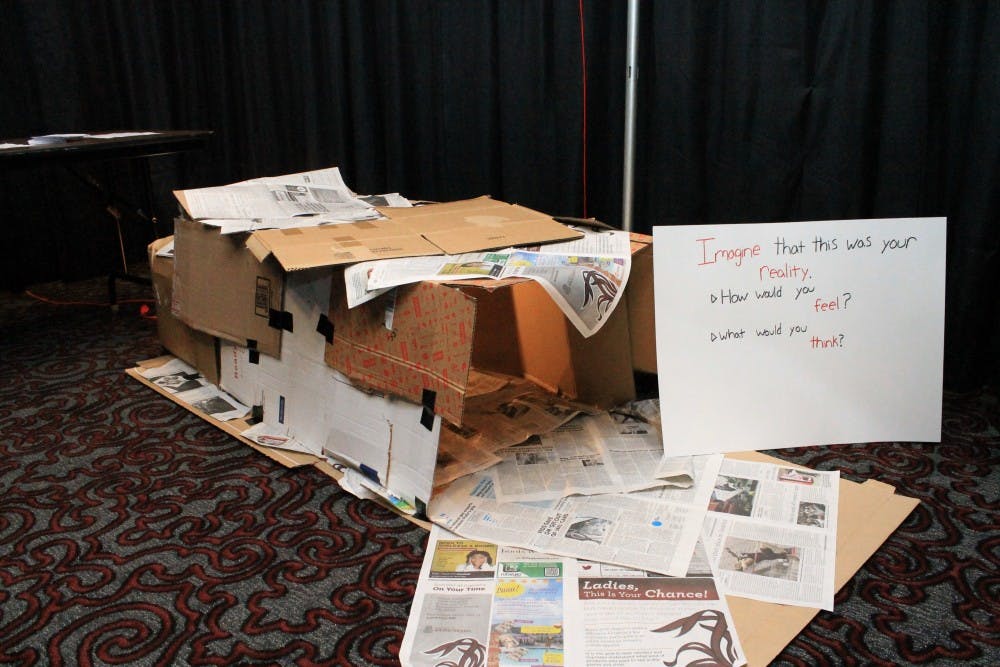USC’s Tunnel of Awareness exhibit seeks to illuminate social justice issues for interested students.
The exhibit, which is in the Capstone House Campus Room, opened Monday and closes today. It will be open from noon to 4 p.m.
The tunnel, which uses the tagline “turn on the light,” is an interactive social justice experience that provides participants with the opportunity to move through different exhibits that focus on specific issues of social awareness.
Volunteers said the tunnel has attracted over 400 participants so far. All current and future resident mentors were required to attend the event to improve their knowledge of social issues that could affect their residents.
The five topics explored by this year’s tunnel were body image, poverty and homelessness, LGBT and disability issues, civility over social media and anxiety.
Each issue had its own room with issue-specific exhibits and statistics to explore and explain its concepts. It included a mirror that encouraged students to assess what they liked about their bodies, a cardboard-and-newspaper setup that depicted the shelter a homeless person might use, and statistics about American perspectives on LGBT issues, disabilities, civility in America and more.
Students were led through in small groups, spending around five minutes in each room to appreciate the ideas inside. At the end, students were asked to participate in a group session led by a “reflection leader” to discuss their experiences in the tunnel and what they had learned.
“Lots of the facts in the tunnel were kind of startling,” said first-year electrical engineering student Anthony Matrejek. “There were a couple times where I had to step back and say, ‘Wow that’s a big percentage. It was really eye opening.’”
Jill Rounds, a second-year higher education and student affairs graduate student and assistant Columbia Hall residence life coordinator, was volunteering for her second year at the event.
“We talked as a staff about the point of the tunnel and the reason why we hold it every year,” Rounds said. “The benefit of this event is that it equips RMs with the knowledge and ability to have conversations with their residents about these kind of things.”
Rounds also noted the effect that the event might have on facilitating these conversations among students themselves.
“Peer-to-peer education is more effective than with a mentor or other person in a position of authority,” Rounds said. “Hopefully this will raise up issues that students don’t often recognize but will now see or things that they wouldn’t have shared otherwise.”
All of the rooms were organized and designed by campus offices or student organizations. This, according to second-year graduate student and Tunnel committee member Lee Roddick, helped keep the issues relevant to the student population.
“Some of the issues presented have changed since last year,” Roddick said. “That’s because we try to use this as a reflection of what the student body thinks is important. These are issues that affect students every day. The tunnel is just taking their voices and making them heard.”

